Google Meet has announced a new update that allows meeting participants to display their pronouns on calls.
The update, available when using the video conferencing tool on the web, will show users’ pronouns on their video tiles if they have them set up in their Google Accounts.
Admins will need to enable the feature within users’ accounts, and the feature is only available for Google Workspace subscriptions including Business and Education users, leaving individual account holders without support for pronouns for the moment.
Once enabled, end users can set their pronouns by going to their Google Account’s ‘About Me’ page and selecting from a predefined list of pronouns or creating a custom one. Furthermore, users will need to set visibility to ‘Anyone.’ Google’s decision to roll out broader support for pronouns across its ecosystem is part of the company’s broader effort to promote inclusivity – pronouns are also supported alongside contact information in Calendar, Chat, Docs, Gmail and more, making it easier for others to refer to individuals correctly.
It’s worth noting that while the functionality is only supported on web at the moment, users can still set their pronouns on mobile devices, suggesting that Google could be working on UI changes to make displaying pronouns on smaller screens easier, though this is only speculation.
Users are encouraged to ensure their pronouns are up to date in their Google settings in order to promote a more inclusive workplace.
The updates form part of a broader push by Google to keep its online collaboration tools fresh and in line with rivals. Just recently, the company announced support for video messages within Chat as well as transcription for voice messages.
Google Workspace adds pronouns to Meet
More from TechRadar Pro
Technology
Samsung Galaxy Tab S10 Ultra vs. Apple iPad Pro
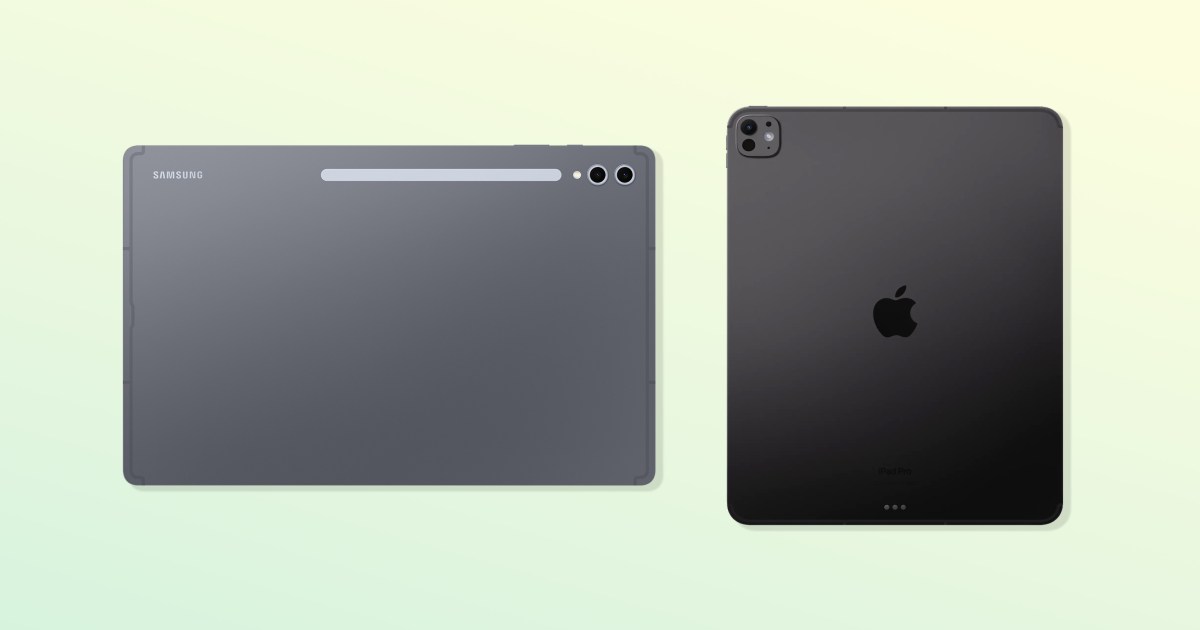
The iPad Pro epitomizes the best tablet experience. Its formidable processor, excellent Pencil utility, and a cohesive Apple ecosystem shape that perception, Samsung is vying to change that with its surefooted Galaxy Tab Ultra series. The newly launched Galaxy Tab S10 Ultra makes a case against the 2024 iPad Pro with some pretty compelling specifications.
The Galaxy Tab S10 Ultra has a colossal, almost-15-inch footprint. It catches up to the iPad Pro with its robust S Pen, a pretty display, a really handy desktop mode, and a similarly lean profile. We highly recommend going through the comparison below to find out which of these flagship tablets is better for your needs.
Samsung Galaxy Tab S10 Ultra vs. Apple iPad Pro: specs
| Specs | Samsung Galaxy Tab S10 Ultra | Apple iPad Pro |
|---|---|---|
| Size | 326.4 x 208.6 x 5.4mm (12.85 x 8.21 x 0.21 inches) | 11-inch: 249.7 x 177.5 x 5.3mm (9.83 x 6.99 x 0.21 inches)
13-inch: 281.6 x 215.5 x 5.1mm (11.09 x 8.48 x 0.20 inches) |
| Weight | 718 grams (1.58 pounds) | 11-inch: 444 grams (1.03 pounds)
13-inch: 579 grams (1.28 pounds) |
| Screen | 14.6-inch AMOLED
2960 x 1848 pixels 120Hz dynamic refresh rate HDR10+, 930 peak nits brightness |
11-inch:
11-inch Ultra Retina Tandem OLED 2420 x 1668 pixels ProMotion with 120Hz dynamic refresh rate Dolby Vision, 1,600 peak nits brightness Anti-reflective nano-texture on higher-end 13-inch: 13-inch Ultra Retina Tandem OLED 2752 x 2064 pixels ProMotion with 120Hz dynamic refresh rate Dolby Vision, 1,600 peak nits brightness Anti-reflective nano-texture on higher-end |
| Operating system | One UI 6.1 based on Android 14 | iPadOS 18 |
| RAM and storage | 12GB & 256GB
12GB & 512GB 16GB & 1TB |
8GB & 256GB
8GB & 512GB 16GB & 1TB 16GB & 2TB |
| Processor | MediaTek Dimensity 9300+
One 3.25GHz Cortex-X4 Prime core Three 2.85GHz Cortex-X4 high-performance cores Four 2.0GHz Cortex-A720 mid cores Immortalis-G720 MC12 GPU |
Apple M4
Nine or 10-core CPU based on the storage 10-core GPU |
| Camera | Rear:
13-megapixels primary, f/2.0, 1/3.4″ 8MP ultrawide, f/2.2, 120° FOV Front: 12MP wide angle, f/2.2 12MP ultrawide, f/2.4 |
Rear:
12MP primary, f/1.8 LiDAR TOF sensor Front: 12MP, f/2.4, 122° FOV |
| Video | Rear:
4K, up to 30 fps Front: 4K, up to 30 fps |
Rear:
4K up to 60 fps or 1080p up to 120 fps Front: 1080p, up to 60 fps |
| Connectivity | Wi-Fi 7, tri-band
Bluetooth 5.3 |
Wi-Fi 6e, dual-band
Bluetooth 5.3 |
| Ports | USB-C Gen 3.2 | USB-C Gen 3.2
DisplayPort |
| Water resistance | IP68 (maximum depth of 6m up to 30 minutes) | No IP ratings |
| Battery & charging | 11,200mAh battery
45W fast charging |
11-inch: 8,160mAh
13-inch: 10,290mAh 40W wired charging |
| Colors | Moonstone Gray, Platinum Silver | Silver, Space Black |
| Price | Starts at $999 | 11-inch: Starts at $999
13-inch: Starts at $1,299 |
Samsung Galaxy Tab S10 Ultra vs. Apple iPad Pro: design

Starting with the design, the 2024 iPad Pro and the new Galaxy Tab S10 Ultra both have slender profiles. The Galaxy Tab S10 Ultra may especially feel a bit daunting because of its huge footprint, but both tablets are edging into the territory of laptops (or successful laptop replacements), so the large screens make sense.
Despite their sizes, the iPad Pro and the Tab S10 Ultra feel premium, thanks to their finely CNC-ed recycled aluminum shells. Being exceptionally slim, both tablets are possibly fragile (we’re reminded of the iPhone 6’s infamous “bendgate”) compared to some thicker devices, so we advise handling them appropriately, especially while carrying them in a backpack.
One way the Tab S10 Ultra feels more assuring is its water resistance. It comes with an IP68 rating for protection underwater and from dust. The iPad Pro, on the other hand, offers no such assurances.

The Tab S10 Ultra comes in a single size, with a 14.6-inch display, while the iPad Pro is available in variants with 11-inch and 13-inch displays. This makes the Tab S10 Ultra significantly bigger and also about 150 grams heavier than the bigger iPad model. The larger display is useful for watching content or reading, but it could also be detrimental to utility while holding for longer durations. The Tab S10 Ultra is also marginally thicker, measuring 5.4mm versus the larger iPad Pro, which measures 5.1mm. Ironically, the smaller iPad Pro is as thick as the Galaxy Tab.
Finally, while the Galaxy Tab S10 Ultra uses the same design as last year, the iPad Pro has a newer, sleeker design, though it still resembles previous generations from behind.
One minor addition to the Galaxy Tab S10 Ultra is a new space on the back to place the S Pen. The cavity makes it easier to hide away the S Pen when it’s not in use and secures it when the official folio case pads the back.
Though both flagship tablets have premium builds, the Tab S10 Ultra’s IP68 rating adds a sense of assurance that the iPad Pro lacks.
Winner: Samsung Galaxy Tab S10 Ultra
Samsung Galaxy Tab S10 Ultra vs. Apple iPad Pro: display

Both the Galaxy Tab S10 Ultra and the iPad Pro (2024) use crisp and vivid OLED displays. Both panels offer up to 120Hz of variable refresh rate, HDR support, and high brightness.
Physically, the display on the Galaxy Tab S1o Ultra is larger. It also features a wider 16:9 aspect ratio in landscape mode, which enables better viewing while playing games and watching video content thanks to slimmer empty bands on each side of the video. The Galaxy Tab S10 Ultra also has narrower bezels, but you may only notice the difference from the iPad Pro while using the two side by side. The Galaxy Tab S10 Ultra comes with a notch up top to house dual front-facing cameras. This interrupts the uniformity of the bezels and may not be to everyone’s taste.
On the other hand, the iPad Pro features a 4:3 aspect ratio that accommodates more content from websites and apps, making it better suited for laptop-like tasks such as web browsing. The iPad Pro isn’t necessarily bad for watching video, but the size of the actual video is smaller than on the Tab S10 Ultra.

Areas where the iPad Pro outperforms the Galaxy Tab include video brightness, color accuracy, and sharpness. While both tablets feature OLED displays, Apple uses two stacked OLED panels, officially called Tandem OLED, for lighting up each of the pixels in the display. Traditional OLED displays only use one.
This allows the iPad Pro’s display to be brighter and have richer colors. Looking at the official numbers, the Galaxy Tab S10 Ultra offers a peak brightness of 930 nits compared to 1,600 nits on the iPad Pro. This advantage is visible while watching HDR content, and is further enhanced by Dolby Vision on the iPad Pro, which the Galaxy Tab S10 Ultra lacks. Instead, it only gets support for HDR10+ like any other Samsung phone or TV. Even though HDR10+ isn’t inferior, it is not as widely adopted as Dolby Vision. As a result, Dolby Vision content scales back to a poorer HDR10 codec, deteriorating the experience on the Tab S10.
Despite being less bright, the Galaxy Tab S10 Ultra may have an advantage when viewed under bright external light as Samsung adds an anti-reflective coating across all storage variants of the Galaxy Tab S10 Ultra. Meanwhile, Apple offers its “nano-texture” anti-reflective glass selectively on the 1TB and 2TB storage variants. While Apple’s application is more intricate and differs from a matte screen protector, you would need to pay extra for the feature.
A brighter display with more accurate colors makes the iPad Pro a better choice for those seeking the best display on a tablet.
Winner: iPad Pro 2024
Samsung Galaxy Tab S10 Ultra vs. Apple iPad Pro: performance

Both the Galaxy Tab S10 Ultra and the iPad Pro are powered by flagship chipsets, but one has a clear advantage over the other. For the Tab S10 Ultra, Samsung steps away from Qualcomm’s chipsets in the previous generation and opts for a MediaTek Dimensity 9300 Plus. The MediaTek chip is uniquely designed and packs only high-performance CPU cores while lacking ones for efficiency cores. This, in principle, allows it to have a better performance than the rest of the competition (limited to Android).
On the other hand, Apple powers the iPad Pro with the M4 silicon, which is, in reality, a chipset meant for laptops such as the MacBook Air and the base MacBook Pro. By default, the laptop-bound chipset places the iPad Pro a level above the Galaxy Tab S10 Ultra. The M4 chip is either available with a 9-core or a 10-core CPU, based on the variant, and a 10-core GPU. This makes it suitable for demanding tasks like video editing.
Another reason the M4 excels is its 3nm architecture, which results in better performance and higher power efficiency. Meanwhile, the Dimensity 9300+ still uses an older 4nm (which, in reality, is an advanced 5nm) node for manufacturing. The Tab S10 Ultra would have been better off with the newer Dimensity 9400, which is the first Android-bound chip manufactured on a 3nm process.

The M4 chip also outpaces the Dimensity 9300 Plus in terms of AI processing capabilities, with Apple claiming it to be its best chipset for AI performance. The neural engine on the M4 is supposedly capable of processing 38 trillion operations per second (TOPS). The neural processor found on the Dimensity 9300 Plus hits 33 TOPS.
Despite these abilities, however, the iPad Pro still lags the Tab S10 Ultra in terms of AI abilities, primarily due to Apple Intelligence still being unavailable. Meanwhile, Samsung brings Galaxy AI to the Tab, which we will discuss in the dedicated software section.
When it comes to storage, the iPad Pro has variants starting at 256GB and going up to 2TB. The extra storage comes at an additional cost. Meanwhile, the Galaxy Tab S10 Ultra offers storage options only up to 1TB, but features an SD card slot with support up to 1.5TB, which can be a cost-effective way to expand, though it won’t offer the same transfer speeds as the built-in storage.
If a good performance or gaming experience is important to you, the iPad Pro will be a better choice. The only thing limiting the tablet’s abilities is iPadOS, which also makes the hardware feel excessive. While it may seem overkill at present, the M4 chip inside should potentially drive the iPad Pro without any hiccups for several years to come. While Samsung also envisions a long utility for the Galaxy Tab S10 Ultra, Android devices rarely deliver the same flagship-level performance after a few years of usage.
Another reason the iPad Pro feels like a better laptop replacement is the Thunderbolt 4 port that enables data transfer at up to 40Gbps, along with support for an external display via DisplayPort. The Galaxy Tab S10 Ultra only gets a USB-C port with USB Gen 3.2 without DisplayPort support.
The iPad Pro takes another win for its beefy hardware and broader storage options.
Winner: iPad Pro 2024
Samsung Galaxy Tab S10 Ultra vs. Apple iPad Pro: battery and charging

While the iPad Pro has an edge in terms of performance, the Galaxy Tab S10 Ultra rules with a significantly larger battery. The tablet has a fittingly large 11,200mAh battery with 45-watt wired charging.
The 11-inch and 13-inch iPad Pro models come with 8,160mAh and 10,290mAh batteries, respectively. Apple also limits the charging rate to less than 40W via the USB-C port. Despite the slimmer design, Apple dd not actually cut the battery’s capacity from older models, and we found the iPad Pro able to deliver a battery backup in line with the M3 MacBook Air. That means you shouldget roughly 18 to 24 hours of on-and-off usage without heavy gaming.
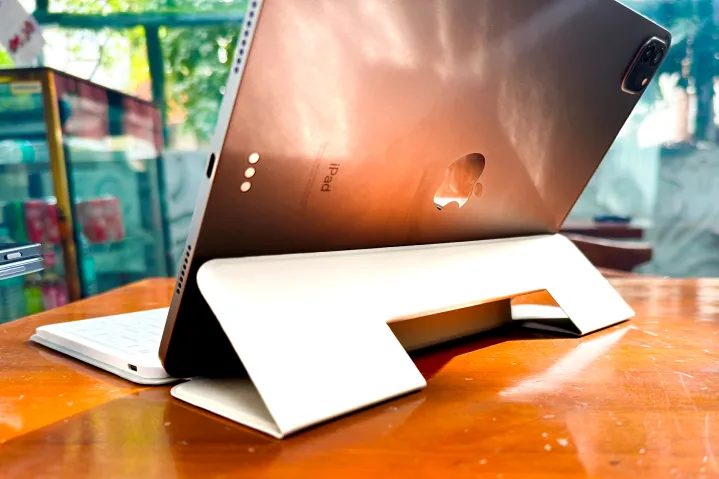
However, the relatively less bright display, a slightly less potent chipset, and a bigger battery on the Galaxy Tab S10 Ultras translate to a longer battery life. With moderate usage, you can push it to more than one day of battery life, which is commendable. However, the charging, despite its 45W support, can take more than two-and-a-half hours, which can feel disappointing.
Surprisingly, Apple ships the new iPad Pro with a charging adapter in the box. At 20W, it isn’t the fastest, but is a welcome and — quite frankly — astonishing move from the company that led the entire smartphone industry to ditch chargers from their packaging. This may, however, not apply to all regions. Samsung ships the Galaxy Tab S1o Ultra without a charger.
If you are looking for a long battery life out of your premium tablet, neither device will disappoint. But the Galaxy Tab S10 Ultra goes the extra mile, thanks to a larger battery and slightly less demanding hardware.
Winner: Samsung Galaxy Tab S10 Ultra
Samsung Galaxy Tab S10 Ultra vs. Apple iPad Pro: cameras

Cameras on tablets, especially ones on the rear, have limited practical utility. So, both Apple and Samsung take the opportunity to furnish their respective flagship tablets with cameras that don’t match up to those of their respective flagship smartphones.
The Tab S10 Ultra has two rear cameras, a 13-megapixel primary and an 8MP ultrawide angle sensor. We don’t expect groundbreaking images from these cameras, but you should be able to take some decent photos.

Meanwhile, the iPad Pro drops the ultrawide camera from the previous generation and sports a single rear camera with a 12MP resolution. The camera is accompanied by a time of flight lidar sensor that can be very useful to creatives who scan real-life objects and create digital replicas for animation, 3D modeling, or replication through 3D printing.
In contrast, the front camera is more significant for its utility in video calls. Both tablets have their front cameras placed in the center of the longer edge, making them more suitable for landscape usage.

The Galaxy Tab S10 Ultra houses two 12MP front cameras inside a notch — a standard wide-angle and an ultrawide, the latter of which helps with automatic framing during video calls. The iPad Pro, on the other hand, has a single 12MP camera with a wide 122-degree field of view, backed by a stack of Face ID sensors without the notch. Even without the second sensor, iPad Pro’s Center Stage functionality keeps you in the middle of the frame during calls.
It’s also worth noting the videos on the iPad Pro’s front camera may let in less light due to having a smaller camera aperture compared to the Galaxy Tab S10 Ultra. Other than video calling, the cameras can also record videos, but the quality is, at best, tolerable. The Galaxy Tab S10 Ultra lets you record 4K videos from the front camera, while the iPad Pro caps them at 1080p. Meanwhile, both tablets allow 4K video recording at up to 60 frames per second (fps) using the rear cameras.
Both tablets have acceptable picture and video quality, along with similar framing features for video calls.
Winner: Tie
Samsung Galaxy Tab S10 Ultra vs. Apple iPad Pro: software and updates

The difference in software on these tablets can be pivotal to your choice. It’s a straight-up Android versus iOS comparison, and you may already have a preference. However, if you don’t, let us break down the ways in which your experience will differ on both.
The Galaxy Tab S10 Ultra runs Samsung’s One UI 6.1 based on Android 14, while iPadOS 18.0.1 is already available for the iPad Pro, with version 18.1 expected very soon. Besides the differences between iOS and Android, both interfaces have their individual advantages, especially if you plan to use them for work.

The Tab S10 Ultra supports DeX mode, which is triggered when you attach the official Book Cover keyboard folio or do it manually. DeX offers a desktop-like environment with features such as easy window snapping, a persistent taskbar, and support for an unlimited number of simultaneously active apps. This can be projected to a bigger display either using a wire or wirelessly. Even without DeX, you can use three apps side by side on the Samsung tablet.
Meanwhile, the iPad supports Stage Manager, which positions the app in use in the center while previews of other active apps show in small tiles on the side. The experience is somewhat similar to a Mac and is ideal for a setup that includes an external monitor. When not using another screen with the iPad Pro, you can open two apps side by side, along with a third as a floating window.
Next, One UI 6.1 has a slew of AI features that especially put the S Pen to use. Besides Circle to Search and translation features, Galaxy AI also helps you write messages and emails and summarize webpages. Another popular feature is Drawing Assist, whichconverts random scribbles into charming AI-generated art pieces in various styles.
The iPad Pro, on the other hand, is touted to receive Apple Intelligence features that will help with similar tasks, including helping compose messages and emails, summarizing notifications, and most importantly, making Siri significantly smarter. However, these features aren’t available yet — unless you run iPadOS in beta — so we can’t fully comment on their effectiveness.

Meanwhile, the iPad Pro overpowers the Tab S10 Ultra in terms of availability of apps, especially ones for creatives. Apps such as Procreate and DaVinci Resolve — apart from Apple’s own Garage Band and Final Cut Pro for iPad — are absent from Android. Adobe’s Creative Cloud apps also seem better suited for iPadOS than they are on Android.
Lastly, Samsung promises seven years of software support on the Tab S10 Ultra. While Apple doesn’t make such claims, the iPad and other devices with iOS are typically supported by Apple for five or more years. So, irrespective of which tablet you choose, it will continue to receive active support from the respective brand for years.
Both Apple and Samsung have their respective ecosystem for harmony between products, though the Apple ecosystem is arguably better and works consistently well.
While One UI and iPadOS are rife with features, both feel underwhelming and inadequate considering the hardware up for offer. The better option between the two depends on several factors, including your preferences, your involvement in ecosystems, and the utility of the tablets.
Winner: Tie
Samsung Galaxy Tab S10 Ultra vs. Apple iPad Pro: accessories

Both the Galaxy Tab S10 Ultra and the iPad have official accessories to expand usability. Starting with their styluses, the S Pen comes bundled with the Galaxy Tab, while an Apple Pencil (USB-C) or Apple Pencil Pro must be bought separately for the iPad Pro.
The extra $79 or $129 (based on whichever you buy) will get you features that the S Pen lacks, including better pressure sensitivity, a squeeze functionality, and support for barrel roll on the Pencil Pro for better brush strokes. The Apple Pencil also gets Find My support to help locate it if you can’t find it.

The S Pen, on the other hand, gets support for air gestures that let you control the Tab S10 Ultra without touching it. It also works as a passive stylus without even charging, though the gestures require the internal battery to be fed. Most importantly, it’s free.

Coming to cases, you can get the official Book Cover keyboard case — with variants with and without trackpad — that lets you use the Tab S10 Ultra like a laptop. The non-trackpad variant costs $200, while one with the trackpad comes at a steep $350. Despite the high prices, we found the experience to be lacking.
Apple’s $299 Magic Keyboard case offers an experience closer to the MacBook, thanks to larger and softer keys and a trackpad with gesture support and haptic feedback, similar to the MacBook’s. The Magic Keyboard also offers a USB-C port for charge and data passthrough, practically adding another port to the iPad Pro. .
The Apple Pencil offers features that are better suited for professional use cases. The Magic Keyboard elevates the experience significantly, though there are various third-party accessories if you wish to spend less for similar functionality.
Winner: iPad Pro 2024
Samsung Galaxy Tab S10 Ultra vs. Apple iPad Pro: price and availability

The Samsung Galaxy Tab S10 Ultra starts at $1,200 for a 256GB storage and 12GB of RAM and goes up to $1,500 for 1TB of storage. Samsung does not offer a cellular variant in the U.S. just yet, so Wi-Fi is your only option. Samsung offers the anti-reflective display as standard across all variants.
The iPad Pro (11-inch) starts at $999, but if you want the anti-reflective coating on your screen, you will need to spend at least $1,699 for the 1TB model. Also, 5G connectivity comes at a markup depending on the storage.
The 13-inch variant starts $1,299, with the nano-coated screen variant coming in at least $1,999. Like the smaller one, cellular variants will cost extra.
Samsung Galaxy Tab S10 Ultra vs. Apple iPad Pro: Which one should you buy?

Both the iPad Pro and Galaxy Tab S10 Ultra are more than mere tablets and are capable of being suitable laptop replacements. Both also feel severely limited by the interface. So, before choosing the better of the two tablets, you must ask yourself whether you need a tablet with that much vigor. If you need something just for casual Netflix bingeing, checking emails, or doodling, you are better off with a less expensive tablet.
Once you’re convinced about spending over a grand on a tablet, you must weigh your requirements. The Galaxy Tab S10 Ultra’s large battery gives it an advantage, and so does the larger screen. The free S Pen is definitely a bonus, while the DeX ecosystem enables you to multitask better than on other Android tablets.
The iPad Pro, on the other hand, is better for creatives such as digital illustrators, music producers, video editors, etc. The Magic Keyboard brings the experience closer to using a MacBook, though you won’t be able to run full macOS apps, which is a shame given it practically has a more powerful processor than the current MacBook Air.
The iPad Pro is also available in a more compact form factor, which can be useful if you tend to carry the tablet often instead of letting it rest on a desk. The downside to this, however, is a smaller battery that may not outlast that of the Galaxy Tab S10 Ultra.
Lastly, your existing devices may also impact your decision. If you already have an iPhone or Mac or both, the iPad Pro may be better fit into that family of devices. If, on the other hand, you use Android or Windows or both, the Galaxy Tab S10 Ultra may be better for its harmony with those platforms.
Winning three out of seven sections (Samsung gets two while two others are tied), the iPad Pro emerges as the better choice in a general sense. However, we strongly recommend reviewing our verdict for each section to find the most fitting flagship tablet for your requirements, as one particular element may be more important to you than another.
Technology
Google Meet now lets users add their pronouns
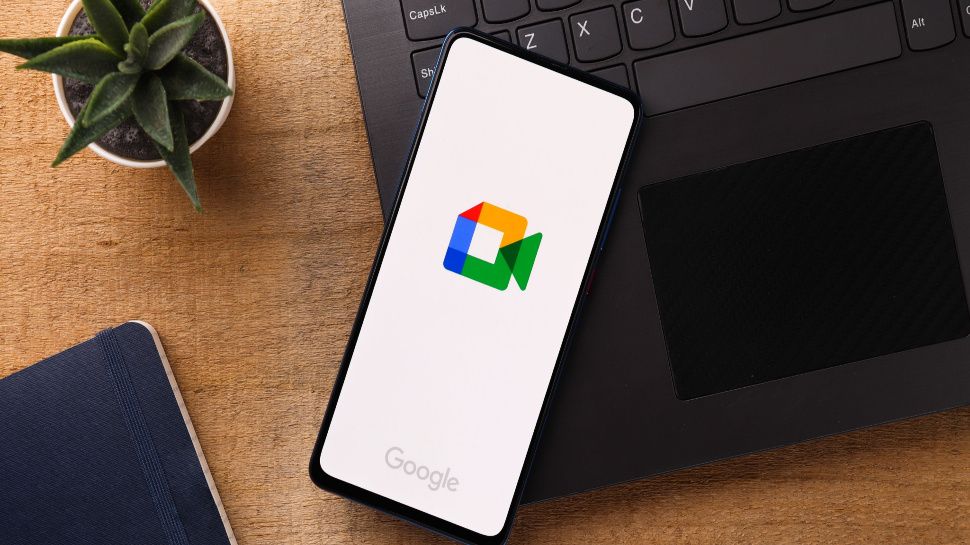
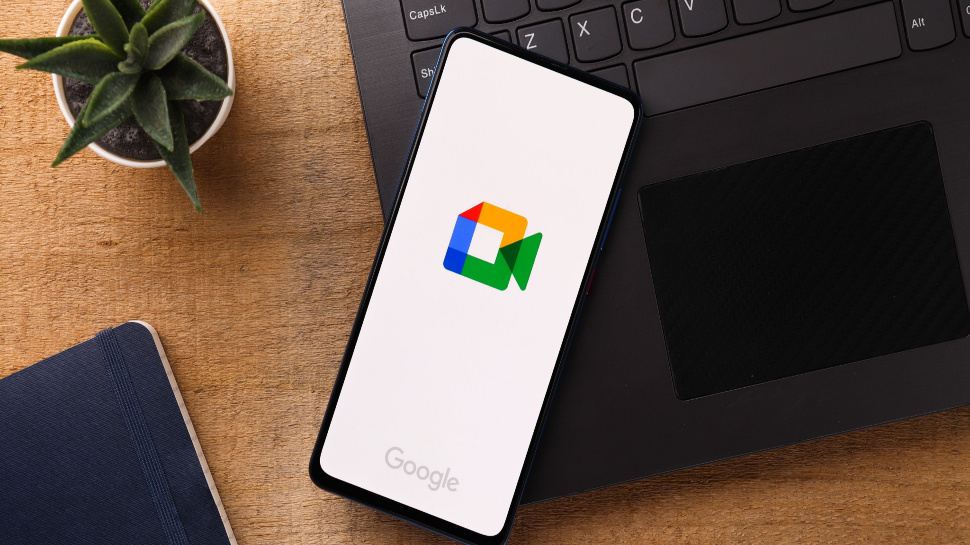
Technology
AMD is finally recognizing that Ryzen 9000 is too expensive
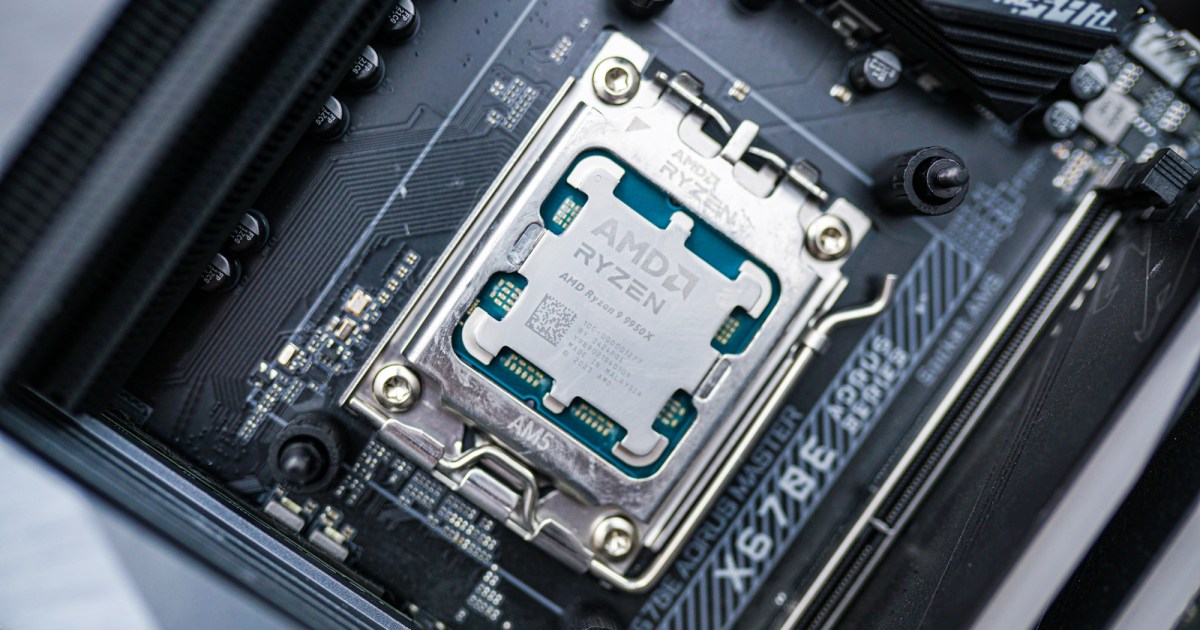
AMD is finally cutting prices on its Ryzen 9000 CPUs. After teasing that its long-awaited Ryzen 7 9800X3D will arrive in November, the company revealed that it’ll be slashing prices on its existing Ryzen 9000 range by anywhere from $30 to $50. Combined with some impressive performance updates, AMD’s latest chips have a better shot at a spot among the best processors than they’ve ever had.
The company describes the price cuts as an early holiday promotion, though it hasn’t put an end date on the discounts. The flagship Ryzen 9 9950X is seeing a $50 price cut, while the remainder of the range is reduced by $30. It’s a clear stab at Intel’s upcoming Arrow Lake CPUs, which go on sale later this week. Similar to the last few generations, Intel is undercutting AMD on pricing, so this promotion brings the scales back in balance.

AMD’s latest CPUs were too expensive, but the unfortunate reality for CPU pricing is that AMD’s recommended pricing has little bearing on the actual price you’ll pay. For example, the , which is exactly $50 less than its list price. The Ryzen 9 9900X, on the other hand, is , which is $70 below its list price.
Although AMD is describing these price cuts as a holiday promotion, there’s a good chance the prices will live on. We’ve already seen price cuts on Ryzen 9000 CPUs, and the processors have reportedly seen poor sales since launch. Even a small price reduction could bring them back into relevance, combined with AMD’s performance updates that can boost speeds by up to 17% in our own testing.
More than anything, AMD’s price cuts here are a message about the upcoming competition from Intel. The upcoming Core Ultra 9 285K will arrive at $589, while the Core Ultra 5 245K is showing up at $309. At the low-end, AMD is now undercutting Intel, and at the high-end, it’s coming in $10 more expensive with the Ryzen 9 9950X. That kind of price shifting lays a foundation for a pure performance comparison when Arrow Lake reviews go live later this week.
Technology
Android 15 update may brick your Pixel 6 if ‘Private Space’ is enabled
Google started rolling out the stable version of Android 15 to its Pixel devices recently. Now reports about Android 15 bricking Pixel 6 phones have started appearing on social media platforms.
Android 15 update bricking some Pixel 6 smartphones
Google launched the Pixel 6 smartphone three years ago. It is still one of the most feature-rich smartphones that offer a pure Android experience. The entry-level Pixel 6 and the Pixel 6 Pro have worked reliably for most buyers.
Google recently released the Android 15 OS update to its Pixel smartphones. The latest update is intended for Pixel smartphones starting from the Pixel 6, and going all the way up to the Pixel 9 Pro Fold.
Google attempted to eliminate some concerning behavior of the Pixel smartphones when they are charging, including random reboots. However, it appears the Android 15 update has started bricking the Pixel 6 smartphone.
Although the update process is smooth and uneventful, some Pixel 6 users have reportedly complained that the update bricks their devices. According to the posts on Reddit, the Pixel 6 devices bricked by the Android 15 update become completely unresponsive.
Why is the latest update causing problems for older Pixel smartphones?
It is concerning to note that this is not the first time a major Android OS update has caused problems for the Pixel 6 smartphones. Last year, the Android 14 update locked the phone’s storage for some users. Earlier this year, a simple factory reset rendered several Pixel 6 devices unresponsive.
This year, the Android 15 update is straight-up bricking some smartphones. Interestingly, there appears to be a pattern that could be avoided. Some Reddit users have mentioned their phones died after enabling the Private Space feature.
Simply put, Pixel 6 smartphone users should avoid installing the Android 15 update for a few days. Moreover, users should back up their data before updating their devices. Additionally, it would be wise to stay away from the Private Space feature, which is pretty unfortunate. This is one of the more exciting Android 15 features to launch.
Science & Environment
Ripple founder has given more than $11.8 million to Harris campaign


Chris Larsen, the co-founder and chairman of Ripple, contributed nearly $9.9 million to Future Forward in September, in addition to more than $800,000 to the Harris Victory Fund, according to FEC data compiled by Breadcrumbs crypto market and blockchain analyst James Delmore and independently verified by CNBC.
Including Larsen’s August contribution of $1 million worth of XRP tokens, the billionaire has given more than $11.8 million to PACs supporting the Harris campaign, making him one of the crypto industry’s largest individual donors this cycle.
Larsen, who’s backed candidates across the aisle the last few years, told CNBC in an interview that his comfort level with Harris comes from conversations he’s had with people inside the campaign and what he’s seen from the vice president since she replaced President Biden at the top of the ticket in July.
It helps that Harris is from the Bay Area.
“She knows people who have grown up in the innovation economy her whole life,” Larsen previously told CNBC. “So I think she gets it at a fundamental level, in a way that I think the Biden folks were just not paying attention to, or maybe just didn’t make the connection between empowering workers and making sure you have American champions dominating their industries.”
Larsen’s affection for the Democratic nominee isn’t new. In February, he gave the maximum personal contribution of $6,600 to Harris (which would cover the primary and general election), about five months before she became the Democratic presidential nominee, FEC filings show. At the same time, he contributed $100,000 to the Harris Action Fund PAC.
Larsen, 64, has a net worth of $3.1 billion, according to Forbes, primarily from his ownership of XRP and involvement in Ripple, which provides blockchain technology for financial services companies.
He’s part of an industry that’s become suddenly prominent in political fundraising, though more heavily in support of Republicans. Nearly half of all the corporate money flowing into the election has come from the crypto industry, according to a recent report from the nonprofit watchdog group Public Citizen.
The Trump PAC has raised about $7.5 million crypto donations since early June.
Fairshake, which is one of the top spending PACs this year, is targeting close House races. The committee gave out nearly $29 million in September.
Of that sum, $20 million went to two affiliated PACs — $15 million to the Defend American Jobs PAC, a single-issue committee focused on cryptocurrency and blockchain policy that’s favored Republicans, and $5 million to Protect Progress, which has only supported Democrats.
The remaining $8.8 million spent by Fairshake last month mostly went to House races in New York, Nevada and California, according to FEC data compiled by crypto market and blockchain analyst James Delmore and verified by CNBC.
Several of those races are considered toss-ups by the Cook Political Report. Among the recipients were Southern California Republicans David G. Valadao and Michael Garcia, who are in tight contests to keep their seats. They’ve received $1.3 million and $1 million, respectively.
For the 2024 cycle, political donations from or supporting the crypto industry reached around $190 million and so far, crypto groups have spent over $130 million of that cash in congressional races for this year’s election, including the primaries.

Technology
The Samsung Galaxy Z Fold Special Edition will only be sold in Korea and China
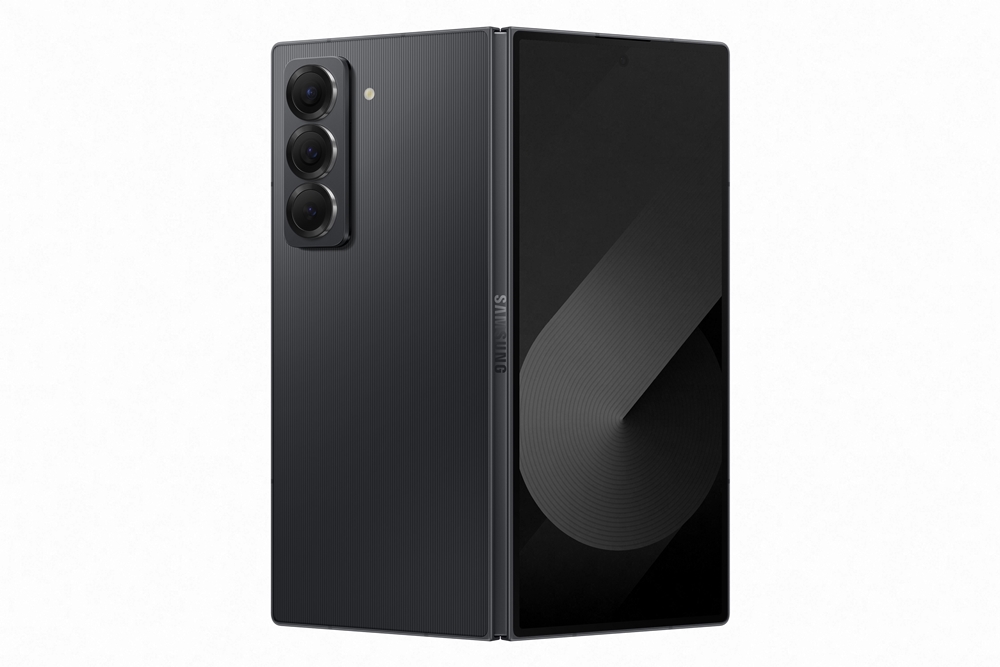
Samsung fans interested in the Galaxy Z Fold series may be curious about the the (SE), which is coming out on October 25, this Friday. However, this smartphone will only reach stores in Korea and China.
The Galaxy Z Fold SE is 1.5mm thinner and three grams lighter than the Galaxy Z Fold 6, measuring 1.6mm thick and weighing 236 grams. The inner and outer screens are 8 and 6.5 inches, respectively. The Galaxy Z Fold 6’s screens are 7.6 and 6.3 inches, in comparison.
While the Galaxy Fold 6 has 12GB of RAM, the Galaxy Z Fold SE will have 16GB of RAM, which allows it to perform better at AI tasks courtesy of Samsung’s . These tasks include real-time conversation interpretation, image editing, summarizing audio and transcription functions. Samsung aims to help users “unleash” their creativity with these and other functions.
The final notable change is the rear camera. The Special Edition rear sensor has been upgraded to 200 megapixels from 50 on the standard model, which is sure to please smartphone photography fans.
Samsung’s suggested price for the Galaxy Z Fold SE is 2,789,600 won, which is approximately $2,025. There are currently no sources mentioning a Chinese price. The Galaxy Fold SE is fundamentally the same as the other Galaxy Z Fold models, but it’s currently the thinnest and lightest one. It’s more challenging to procure if you’re not in Korea or China, but perhaps Samsung will change that in the future.
Technology
Tropical Storm Oscar is making Cuba’s nationwide power outage even worse

Tropical Storm Oscar is making it harder to restore power in Cuba after a massive, prolonged power outage that preceded the storm.
The nation’s power grid failed on Friday after Cuba’s largest power plant went offline, leaving more than 10 million people without electricity. The grid reportedly collapsed four more times before Oscar made landfall as a Category 1 storm on Sunday evening.
Oscar is hitting a key region for power generation where at least two important power plants in the city of Holguín Santiago de Cuba are located. The storm creates “an additional inconvenience,” the Associated Press reports Energy Minister Vicente de la O Levy saying in a news conference. The storm is still barreling through Cuba today, posing new dangers to residents and complicating efforts to get the power grid running again.
Oscar is still dangerous even though it has weakened into a tropical storm since making landfall. Heavy rainfall is expected to trigger “life-threatening flash flooding along with mudslides across portions of eastern Cuba, especially within the Sierra Maestra” through midweek, according to the US National Hurricane Center.
Authorities are working with the aim of restoring power by Tuesday, de la O Levy said. Several days without power have already taken a big toll, leaving people without running water systems (since water pumps need electricity) or refrigeration to keep food from rotting.
Even before last week’s crisis, Cuba was already teetering on an energy crisis with an aging power grid and looming fuel shortages. Officials say they’re working to get micro power grid systems running to restore electricity region by region until “greater stability” can be achieved.
-

 Technology4 weeks ago
Technology4 weeks agoIs sharing your smartphone PIN part of a healthy relationship?
-

 Science & Environment1 month ago
Science & Environment1 month agoHyperelastic gel is one of the stretchiest materials known to science
-

 Science & Environment1 month ago
Science & Environment1 month ago‘Running of the bulls’ festival crowds move like charged particles
-

 Science & Environment1 month ago
Science & Environment1 month agoHow to unsnarl a tangle of threads, according to physics
-

 Science & Environment1 month ago
Science & Environment1 month agoMaxwell’s demon charges quantum batteries inside of a quantum computer
-

 Technology1 month ago
Technology1 month agoWould-be reality TV contestants ‘not looking real’
-

 Science & Environment4 weeks ago
Science & Environment4 weeks agoX-rays reveal half-billion-year-old insect ancestor
-

 Science & Environment1 month ago
Science & Environment1 month agoSunlight-trapping device can generate temperatures over 1000°C
-

 Science & Environment1 month ago
Science & Environment1 month agoLiquid crystals could improve quantum communication devices
-

 Science & Environment1 month ago
Science & Environment1 month agoQuantum ‘supersolid’ matter stirred using magnets
-

 Womens Workouts4 weeks ago
Womens Workouts4 weeks ago3 Day Full Body Women’s Dumbbell Only Workout
-

 Science & Environment1 month ago
Science & Environment1 month agoWhy this is a golden age for life to thrive across the universe
-

 Science & Environment1 month ago
Science & Environment1 month agoLaser helps turn an electron into a coil of mass and charge
-

 TV3 weeks ago
TV3 weeks agoসারাদেশে দিনব্যাপী বৃষ্টির পূর্বাভাস; সমুদ্রবন্দরে ৩ নম্বর সংকেত | Weather Today | Jamuna TV
-

 Science & Environment1 month ago
Science & Environment1 month agoA new kind of experiment at the Large Hadron Collider could unravel quantum reality
-

 Science & Environment1 month ago
Science & Environment1 month agoQuantum forces used to automatically assemble tiny device
-

 Science & Environment1 month ago
Science & Environment1 month agoNerve fibres in the brain could generate quantum entanglement
-

 Science & Environment1 month ago
Science & Environment1 month agoHow to wrap your mind around the real multiverse
-

 Technology3 weeks ago
Technology3 weeks agoUkraine is using AI to manage the removal of Russian landmines
-

 Science & Environment1 month ago
Science & Environment1 month agoA slight curve helps rocks make the biggest splash
-

 Science & Environment1 month ago
Science & Environment1 month agoITER: Is the world’s biggest fusion experiment dead after new delay to 2035?
-
Business3 weeks ago
DoJ accuses Donald Trump of ‘private criminal effort’ to overturn 2020 election
-

 Business2 weeks ago
Business2 weeks agoWhen to tip and when not to tip
-
News1 month ago
the pick of new debut fiction
-

 News1 month ago
News1 month ago▶️ Hamas in the West Bank: Rising Support and Deadly Attacks You Might Not Know About
-

 Science & Environment1 month ago
Science & Environment1 month agoTime travel sci-fi novel is a rip-roaringly good thought experiment
-

 News1 month ago
News1 month ago▶️ Media Bias: How They Spin Attack on Hezbollah and Ignore the Reality
-

 Science & Environment1 month ago
Science & Environment1 month agoNuclear fusion experiment overcomes two key operating hurdles
-

 News4 weeks ago
News4 weeks agoOur millionaire neighbour blocks us from using public footpath & screams at us in street.. it’s like living in a WARZONE – WordupNews
-

 Technology4 weeks ago
Technology4 weeks agoWhy Machines Learn: A clever primer makes sense of what makes AI possible
-

 MMA3 weeks ago
MMA3 weeks agoJulianna Peña trashes Raquel Pennington’s behavior as champ
-

 News2 weeks ago
News2 weeks agoMassive blasts in Beirut after renewed Israeli air strikes
-

 News2 weeks ago
News2 weeks agoNavigating the News Void: Opportunities for Revitalization
-

 Technology3 weeks ago
Technology3 weeks agoMicrophone made of atom-thick graphene could be used in smartphones
-

 Football3 weeks ago
Football3 weeks agoRangers & Celtic ready for first SWPL derby showdown
-

 Science & Environment1 month ago
Science & Environment1 month agoPhysicists have worked out how to melt any material
-

 MMA3 weeks ago
MMA3 weeks agoPereira vs. Rountree prediction: Champ chases legend status
-

 Technology2 weeks ago
Technology2 weeks agoSamsung Passkeys will work with Samsung’s smart home devices
-

 News2 weeks ago
News2 weeks ago▶ Hamas Spent $1B on Tunnels Instead of Investing in a Future for Gaza’s People
-

 Sport3 weeks ago
Sport3 weeks agoWorld’s sexiest referee Claudia Romani shows off incredible figure in animal print bikini on South Beach
-

 Technology3 weeks ago
Technology3 weeks agoThis AI video generator can melt, crush, blow up, or turn anything into cake
-

 Sport3 weeks ago
Sport3 weeks agoBoxing: World champion Nick Ball set for Liverpool homecoming against Ronny Rios
-

 TV2 weeks ago
TV2 weeks agoLove Island star sparks feud rumours as one Islander is missing from glam girls’ night
-

 Sport2 weeks ago
Sport2 weeks agoWales fall to second loss of WXV against Italy
-

 News3 weeks ago
News3 weeks agoHeartbreaking end to search as body of influencer, 27, found after yacht party shipwreck on ‘Devil’s Throat’ coastline
-

 News2 weeks ago
News2 weeks agoHeavy strikes shake Beirut as Israel expands Lebanon campaign
-

 Sport2 weeks ago
Sport2 weeks agoCoco Gauff stages superb comeback to reach China Open final
-

 Science & Environment1 month ago
Science & Environment1 month agoPhysicists are grappling with their own reproducibility crisis
-

 TV3 weeks ago
TV3 weeks agoPhillip Schofield accidentally sets his camp on FIRE after using emergency radio to Channel 5 crew
-

 Technology3 weeks ago
Technology3 weeks agoTexas is suing TikTok for allegedly violating its new child privacy law
-

 Sport3 weeks ago
Sport3 weeks agoSturm Graz: How Austrians ended Red Bull’s title dominance
-

 News2 weeks ago
News2 weeks agoFamily plans to honor hurricane victim using logs from fallen tree that killed him
-

 MMA2 weeks ago
MMA2 weeks agoPereira vs. Rountree preview show live stream
-

 MMA2 weeks ago
MMA2 weeks ago‘Uncrowned queen’ Kayla Harrison tastes blood, wants UFC title run
-

 MMA3 weeks ago
MMA3 weeks agoDana White’s Contender Series 74 recap, analysis, winner grades
-

 Technology1 month ago
Technology1 month agoMeta has a major opportunity to win the AI hardware race
-
Business3 weeks ago
Eurosceptic Andrej Babiš eyes return to power in Czech Republic
-

 News1 month ago
News1 month agoYou’re a Hypocrite, And So Am I
-

 Sport1 month ago
Sport1 month agoJoshua vs Dubois: Chris Eubank Jr says ‘AJ’ could beat Tyson Fury and any other heavyweight in the world
-

 Science & Environment1 month ago
Science & Environment1 month agoA tale of two mysteries: ghostly neutrinos and the proton decay puzzle
-

 Technology3 weeks ago
Technology3 weeks agoArtificial flavours released by cooking aim to improve lab-grown meat
-

 MMA3 weeks ago
MMA3 weeks agoAlex Pereira faces ‘trap game’ vs. Khalil Rountree
-

 Technology3 weeks ago
Technology3 weeks agoAmazon’s Ring just doubled the price of its alarm monitoring service for grandfathered customers
-

 Technology3 weeks ago
Technology3 weeks agoMusk faces SEC questions over X takeover
-

 News3 weeks ago
News3 weeks agoGerman Car Company Declares Bankruptcy – 200 Employees Lose Their Jobs
-

 TV2 weeks ago
TV2 weeks agoMaayavi (මායාවී) | Episode 23 | 02nd October 2024 | Sirasa TV
-

 Technology2 weeks ago
Technology2 weeks agoPopular financial newsletter claims Roblox enables child sexual abuse
-

 Money2 weeks ago
Money2 weeks agoWhy thousands of pensioners WON’T see State Pension rise by full £460 next year
-
Business3 weeks ago
Bank of England warns of ‘future stress’ from hedge fund bets against US Treasuries
-

 Business3 weeks ago
Business3 weeks agoChancellor Rachel Reeves says she needs to raise £20bn. How might she do it?
-

 Football3 weeks ago
Football3 weeks agoSimo Valakari: New St Johnstone boss says Scotland special in his heart
-

 News3 weeks ago
News3 weeks agoHungry customer left gobsmacked as two blokes riding giant HORSES stroll into local chip shop
-
Politics3 weeks ago
Rosie Duffield’s savage departure raises difficult questions for Keir Starmer. He’d be foolish to ignore them | Gaby Hinsliff
-

 News2 weeks ago
News2 weeks agoHull KR 10-8 Warrington Wolves – Robins reach first Super League Grand Final
-

 MMA2 weeks ago
MMA2 weeks agoUFC 307 preview show: Will Alex Pereira’s wild ride continue, or does Khalil Rountree shock the world?
-

 Technology2 weeks ago
Technology2 weeks agoHow to disable Google Assistant on your Pixel Watch 3
-

 Technology2 weeks ago
Technology2 weeks agoA very underrated horror movie sequel is streaming on Max
-

 Sport2 weeks ago
Sport2 weeks agoMan City ask for Premier League season to be DELAYED as Pep Guardiola escalates fixture pile-up row
-

 Science & Environment1 month ago
Science & Environment1 month agoRethinking space and time could let us do away with dark matter
-

 Health & fitness1 month ago
Health & fitness1 month agoThe secret to a six pack – and how to keep your washboard abs in 2022
-

 Science & Environment1 month ago
Science & Environment1 month agoCaroline Ellison aims to duck prison sentence for role in FTX collapse
-
News1 month ago
The Project Censored Newsletter – May 2024
-

 Technology3 weeks ago
Technology3 weeks agoQuantum computers may work better when they ignore causality
-

 Technology3 weeks ago
Technology3 weeks agoUniversity examiners fail to spot ChatGPT answers in real-world test
-

 News1 month ago
News1 month agoNew investigation ordered into ‘doorstep murder’ of Alistair Wilson
-

 Sport3 weeks ago
Sport3 weeks agoWatch UFC star deliver ‘one of the most brutal knockouts ever’ that left opponent laid spark out on the canvas
-

 Technology3 weeks ago
Technology3 weeks agoEpic Games CEO Tim Sweeney renews blast at ‘gatekeeper’ platform owners
-

 Science & Environment3 weeks ago
Science & Environment3 weeks agoMarkets watch for dangers of further escalation
-

 News3 weeks ago
News3 weeks ago‘Blacks for Trump’ and Pennsylvania progressives play for undecided voters
-

 Technology3 weeks ago
Technology3 weeks agoApple iPhone 16 Plus vs Samsung Galaxy S24+
-

 TV2 weeks ago
TV2 weeks agoThe Sopranos: ‘Annoyed’ cast member criticises their final scene in HBO show
-

 Technology2 weeks ago
Technology2 weeks agoUlefone Armor Pad 4 Ultra is now available, at a discount
-

 News2 weeks ago
News2 weeks agoReach CEO Jim Mullen: If government advertises with us, we’ll employ more reporters
-

 Money2 weeks ago
Money2 weeks agoWetherspoons issues update on closures – see the full list of five still at risk and 26 gone for good
-

 News2 weeks ago
News2 weeks agoBalancing India and China Is the Challenge for Sri Lanka’s Dissanayake
-

 Technology2 weeks ago
Technology2 weeks agoThe best shows on Max (formerly HBO Max) right now
-

 MMA3 weeks ago
MMA3 weeks agoHow to watch Salt Lake City title fights, lineup, odds, more
-
Business3 weeks ago
Top shale boss says US ‘unusually vulnerable’ to Middle East oil shock
-

 Technology3 weeks ago
Technology3 weeks agoJ.B. Hunt and UP.Labs launch venture lab to build logistics startups
-

 News3 weeks ago
News3 weeks agoWoman who died of cancer ‘was misdiagnosed on phone call with GP’




You must be logged in to post a comment Login